Shibari -Japanese rope bondage, is an ancient art form that made its way West and gained popularity through the underground BDSM scene.
Shibari – The Japanese art of tying
In the Western world, this term has become established as a synonym for Japanese-oriented tying. In Japan itself, the term Kinbaku is more commonly used for tying people up. Originally, Shibari was performed in Japanese erotic theaters (early 20th century). However, in the course of time, elements of Hojo Jutsu were added, which were further refined by renowned Shibarites.
We spoke with Wolf Rope a Shibari artist from South-West Germany for whom Shibari is an intrinsic part of life.
BDSM
WolfRope has lived the BDSM culture since early adulthood. He had turned to the Japanese-oriented bondage a few years ago. He dedicates himself to the study of Yukimura Ryu, Osada Ryu, and the Naka style of Shibari. What began playfully in his early years, extended in his late youth to bondage games in the form of functional and jewelry bondage. Out of a happy coincidence, he could get the first insights into the Shibari.
“The possibilities of the rope exert a great fascination on me. I am touched by the aesthetics of bondage and highlighting the beauty of my bondage partner as well as the depth and intensity of communication via the rope”.
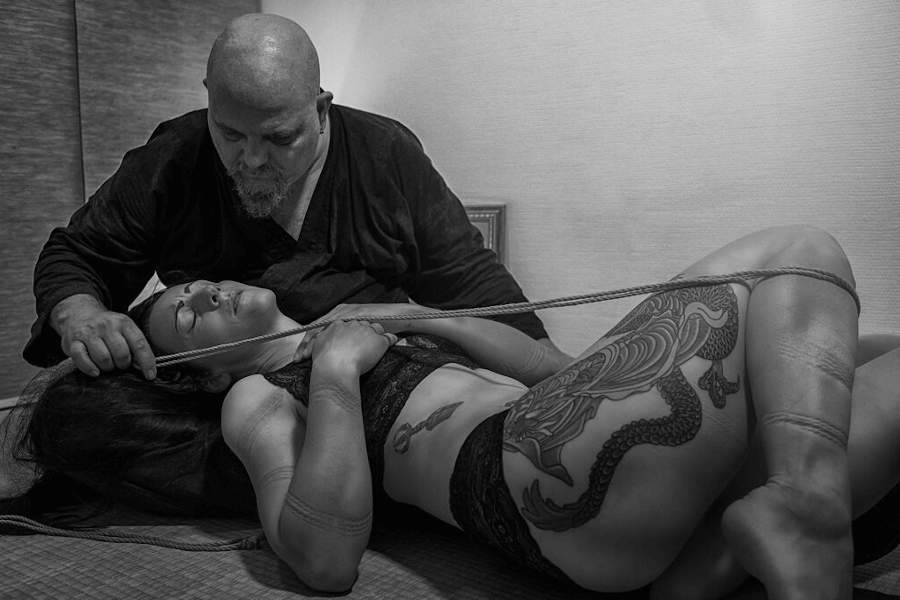
Misogynist, sexual kink, or an artistic expression.
In WolfRope’s world, Shibari is anything but misogynistic. On the contrary, it emphasizes the natural beauty of the female body. It’s a game of dominance and surrender, a dialogue between two souls meeting. Bondage has different gradations and can start from delicate floor bondage up to challenging the full suspension.
“Here, aesthetics always plays a big role for me, because I know, If the model does not feel beautiful and secure, it cannot be a fulfilling session for both sides.
There is always a touch of eroticism involved, sexuality can also play a role, but for me, it is not the primary goal when tying a person”.
“In summary, Shibari is for me the art to tie up my opposite in a previously defined framework, to emphasize the beauty and in the optimal case to touch the soul of the model”.
Expression
WolfRope practices shibari mostly with his life partner, but he also has models with whom he practices. This includes models with whom he does shibari regularly and who occasionally help him out at workshops. Over the years he has noticed that something was always missing. Today he knows that it was the closeness and intensity, the truly touching of the soul of my counterpart.
“My first steps in Shibari were overwhelming by the depths that I could reach with ropes in a session”.
The difference between Japanese and Western Shibari
One big difference is the Shibari teaching system.
“My experience is that in the Western world we take the first steps towards shibari in workshops. Here we expect as much input as possible for our invested money and approach the teacher more offensively”.
In comparison, this was practiced differently for a long time in Japan. Wherein only selected students could watch the master tying up his model. Today, the teaching method in Japan is changing somewhat to be more appealing to a western audience. “When it comes to bondage itself, I have observed that in Japan, much more than in Germany that the model’s shame, exposure, and dirty talk are played with. I also, see that in western Shibari, security aspects are usually given a higher priority”.
Another observation of Wolf’s is that Shibari practiced in Japan is focused more on BDSM. In comparison, we can observe more and more art forms from western Shibari, including tantra Shibari, yoga Shibari. “This development is rather incomprehensible to Japanese riggers”.
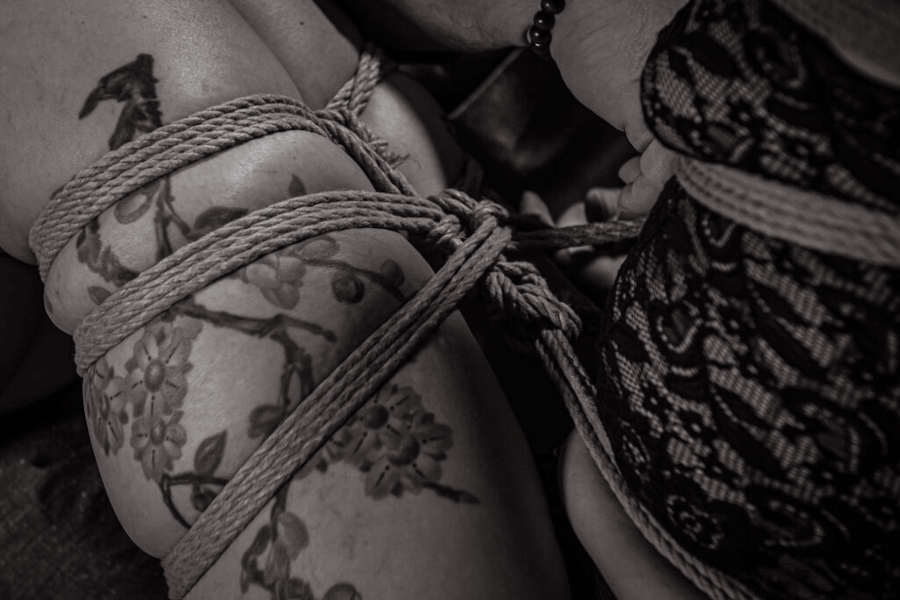
Kinbaku or Shibari
Shibari is the Japanese term for binding. In the Western world, the term has become established for Japanese-oriented tying. Kinbaku means tight binding (tight bondage) and is used in Japan as a term for tying people up. Since WolfRope combines several styles and approaches of Shibari in his style of bondage, he has defined the following for himself to differentiate.
“Shibari for me refers to all practices where I am close to the rope partner. In other words, all techniques have a lot to do with physical contact and dialogue. Kinbaku combines techniques that are more restrictive and limit the model’s movement possibilities considerably. This can sometimes lead to physical and psychological limits, which are defined differently by each. bondage partner”.
Time in Japan
Visits to Japan had a great impact on WolfRope and contributed to his personal development. “I had never before traveled to a country where I experienced so much respect, mindfulness, and humility”.
One experience that has remained in Wolf’s memory and is repeated each time he arrives at one of Tokyo’s large train stations is the feeling of thousands of people scurrying through the underground station, then upon exiting the station into the busy streets of Tokyo a sensory overload of neon signs loud advertising, music and signal sounds of all kinds confront him. After battling through the streets of downtown Tokyo Wolf meets with his sensei Osada Steve of Studio Six. An oasis of peace. “All in all, it can be a great challenge for a Westerner to take a step back and grasp the spirit of Japan. believe me, it is great in enrichment”.
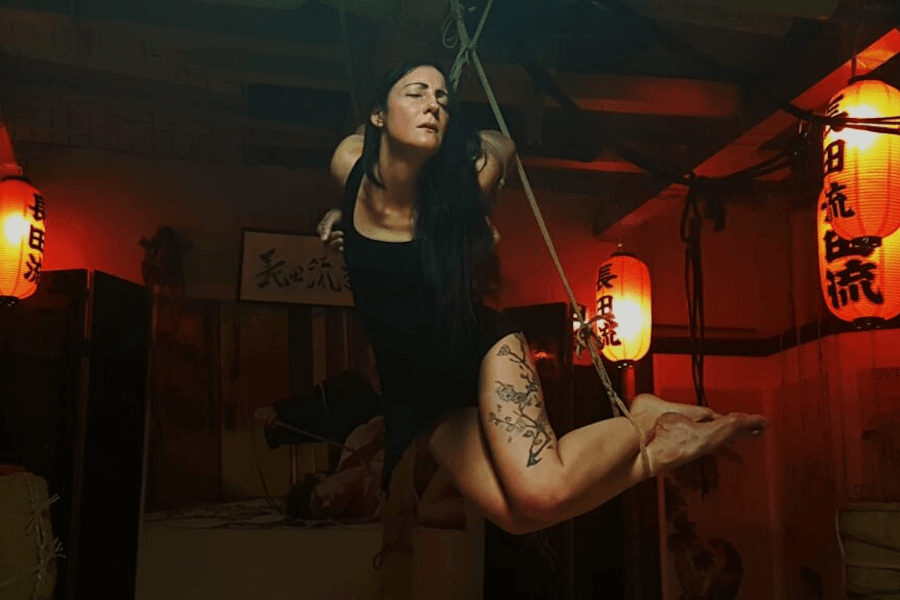
Most Japanese practice Shibari True or False
“I dare to doubt this statement. Through conversations with Japanese people, I could determine that bondage is still a taboo subject in Japan, much more than for us Western-oriented people. Shibari is still strongly attributed to the erotic or porn scene. It is practiced predominantly underground in special erotic or Shibari clubs or at private bondage meetings.”
Rigger or Rope Bunny?
Being a rigger means that Wolf is fully aware of his responsibility and the trust of his rope partner. As the active part, he must always respect the taboos of his rope partner and never act beyond the limits. This also includes being realistic about his abilities and not negligently exceeding them. Passive does not mean that you transfer the complete responsibility to the rigger. It means that the model can realistically assess his or her abilities and limits and signal this to the rigger even in bondage.
“As a self-responsible part, a Rope Bunny should never exceed his own limits out of complaisance or overzealousness”.
Shibari -Japanese rope bondage, a form of meditation
This is something that every bondage couple must decide for themselves. For some, aesthetics plays a role in the sense that beautiful pictures of bondage should be created, i.e., a kind of practically practiced art. Here, meditation is certainly not an issue. Some people live out their sadism or masochism with ropes, the physical experience plays a big role without going into detail about the beauty of the bondage.
Others see bondage as a form of meditation, namely when it comes to the subtle game of dominance and devotion, trust, and non-verbal communication in the session. “For the passive part, it is a meditative exploration of the boundaries, a letting go. For the active part, it is learning to read the other person, to interpret the signs correctly, and finally the deep feeling of gratitude when you realize that a person trusts you completely.”
There are many hybrids of this. The important thing is that both sides have a common consensus about it from the beginning.
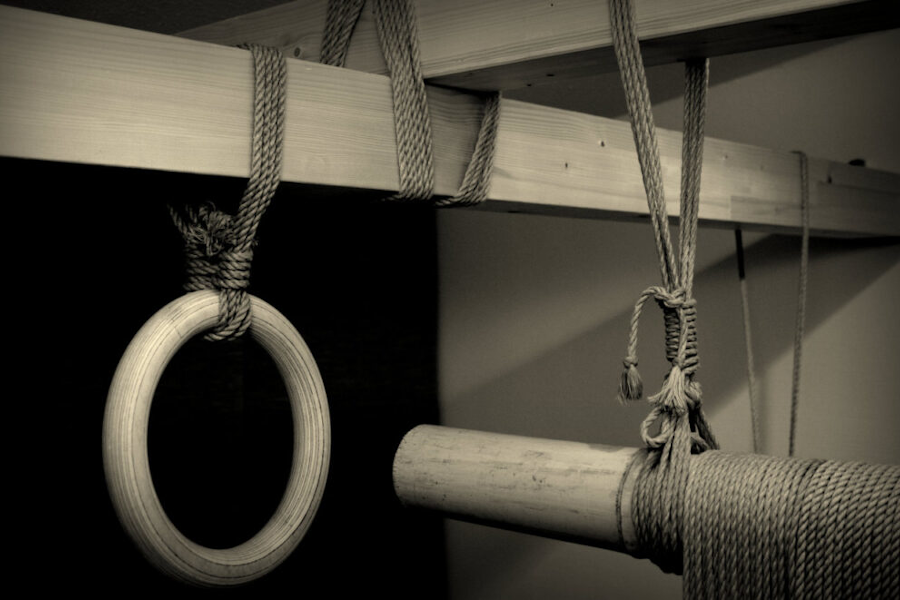
Rituals before a session
“A session with a novice basically begins on the floor, with bondage, which is suitable for exploring the limits. Many newcomers have the desire to go as quickly as possible in the direction of suspension, which Wolf personally, advises against. From a professional point of view, I feel it is negligent to list various warnings. signs here, as beginners do not yet know how to classify them correctly”.
Pratcing Shibari for the first time
“Most models who want to go into ropes for the first time have specific ideas. Inspired by pictures from the internet many want to get directly into the suspension, without knowing their own limits”. WolfRope goes through a detailed preliminary talk before each session, in which the wishes and expectations of the novice are asked. Further components of the preliminary talk are pre-existing conditions, fears, traumas, and taboos.
How to tie the knots
“This question is difficult to answer and the answer would go beyond the scope of the interview. In principle, as I learned from my teachers. However, at this point, I would like to mention that I can only recommend that every beginner looks out for a good and experienced teacher from the beginning and not start with online tutorials. There are too many details, also regarding safety-relevant aspects, which can hardly be conveyed in videos.”
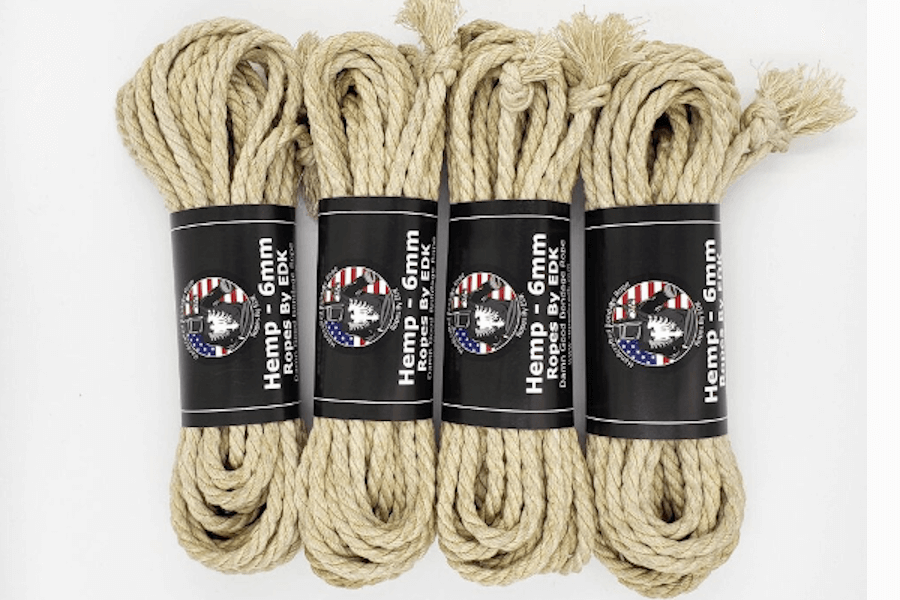
Rope to start
“My personal preference for beginners is for 6 mm hemp rope. At least in Germany, this is manufactured according to a defined industry standard (DIN) and thus, has an assured breaking load. In addition to the stability of the rope, the durability is a great advantage over other types of rope”.
”A session usually always begins on the floor. Here I try to find out in which mood my bondage partner is in and this determines the further course of the session.”
At the end of the session, there is always aftercare. This can always be different depending on the bondage partner.”
Shibari Masters
At the beginning of his path, WolfRope was accompanied by Michael Ropeknight, who is now a Yukimura Ryu and Osada Ryu instructor. This has significantly contributed to further develop his soft skills, for which he’s incredibly grateful. Currently, he’s accompanied by two Shibari masters from Japan: Osada Steve sensei and Akira Naka sensei.
“My special thanks also go to them for their understanding that two bondage-style hearts beat in my chest.”
WolfRope has been active in organizing Rope events, giving workshops, and offering private lessons for several years. Wolf is involved as a member of the volunteer community RopeHelp.de a contact point for riggers and models to ask questions and gain answers.
Wolf Rope Social
Photography credits to Benjamin Börries, Focusfinder and IWatch.







